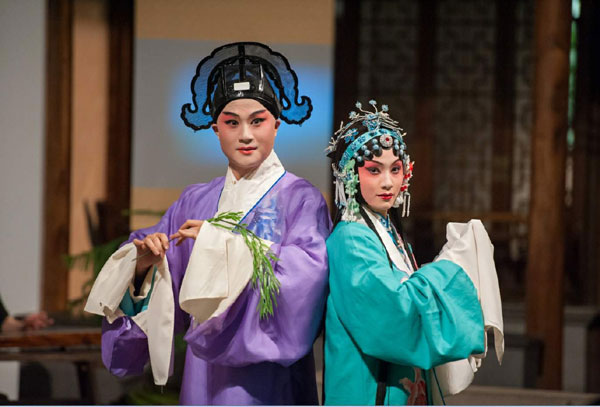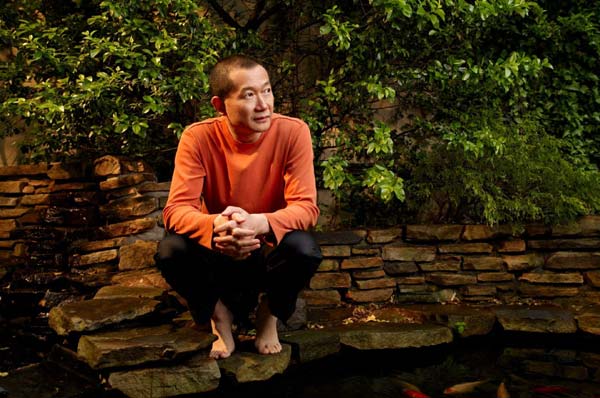Operatic dream blossoms
Updated: 2013-01-12 08:25
By Liu Yuhan (China Daily)
|
|||||||||||
By setting the Kunqu Opera The Peony Pavilion among the Chinese gardens in New York's Metropolitan Museum of Art, composer Tan Dun breathed new life into the 16th-century work - affirming its epic status while infusing it with timeless lyricism.
Co-produced by the Met and the US-China Cultural Institute, Tan's version used lush backdrops from the eight-gallery Chinese Gardens exhibit in the museum's Astor Court. The exhibit, now closed, explored 1,000 years of rich interactions between pictorial and gardening arts in China.
The Met's Astor Court, opened in 1981, was the first authentic Ming Dynasty-style garden built outside of China.
This early example of China-US cultural exchange is modeled on a courtyard in the Master of the Fishing Nets garden in Suzhou, Jiangsu province.
The original, built in the 12th century and restored in 1785, is recognized as a World Heritage Site by the United Nations Educational, Scientific and Cultural Organization.
"Doing The Peony Pavilion - about love, life and the future in retrospect, so to speak - is very meaningful to me, and it's very meaningful to traditional Chinese Kunqu Opera and garden culture," says Tan, who is best known for winning the Academy Award for Best Original Score for the 2000 film Crouching Tiger, Hidden Dragon.
Classic Kunqu
|
 Zhang Jun (left) and Zhang Ran play the leads in Tan Dun's The Peony Pavilion, performed at New York's Metropolitan Museum of Art in December. Stephanie Berger / for China Daily |
The Peony Pavilion, written by Tang Xianzu during the late Ming Dynasty (1368-1644), was first performed in 1598 and has come to be regarded as the most important Kunqu works.
At its core is a love story between characters Liu Mengmei and Du Liniang.
Du walks in the garden and falls asleep. In her dreams, she encounters Liu as a young scholar. She has never met this man in real life but falls deeply in love with him, nonetheless.
When Du wakes up, she becomes preoccupied with her dream affair but soon dies of lovesickness, leaving only her portrait behind.
Liu, on his way to take a high-stakes exam to join the emperor's civil service, passes by the garden of their dream liaisons. He sees Du's picture and falls in love with it.
Liu later digs up the girl's corpse. Du later comes back to life, and the pair eventually unites in "real life".
In its original form, the opera can last 20 hours. The scale is monumental, but so is Tan's efficient distillation of dream imagery and seemingly supernatural elements, says Maxwell Hearn, the Met's curator of Asian art.
Today's Top News
Police continue manhunt for 2nd bombing suspect
H7N9 flu transmission studied
8% growth predicted for Q2
Nuke reactor gets foreign contract
First couple on Time's list of most influential
'Green' awareness levels drop in Beijing
Palace Museum spruces up
Trading channels 'need to broaden'
Hot Topics
Lunar probe , China growth forecasts, Emission rules get tougher, China seen through 'colored lens', International board,
Editor's Picks

|

|

|

|

|

|






